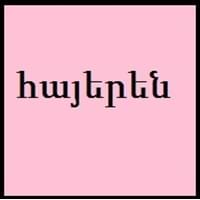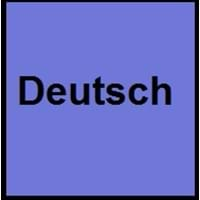Countries
Armenian Highland
Austria, Belgium, Germany, Italy, Liechtenstein, Luxembourg, Switzerland
National Language
Armenia, Nagorno-Karabakh Republic
Germany
Second Language
Not spoken in any of the countries
North Dakota, United States of America
Speaking Continents
Asia, Europe
Europe
Minority Language
Cyprus, Hungary, Iraq, Poland, Romania, Ukraine
Czech Republic, Denmark, Former Soviet Union, France, Hungary, Italy, Namibia, Poland, Romania, Slovakia, Slovenia
Regulated By
Armenian National Academy of Sciences
Council for German Orthography
Interesting Facts
- The first language into which Bible was translated is Armenian.
- Christianity was recognized as a national religion in 301 by Armenia Country.
- One of the large group of Indo-Germanic languages is German.
- The second most popular Germanic language spoken today behind English is German language.
Similar To
Greek
Dutch, Danish, Norwegian, Swedish and English Languages
Derived From
Not Available
Albanian Languages
Alphabets in
Armenian-Alphabets.jpg#200
German-Alphabets.jpg#200
Scripts
Armenian manuscript
Latin
Writing Direction
Left-To-Right, Horizontal
Left-To-Right, Horizontal
Hello
Բարեւ (Barev)
hallo
Thank You
Շնորհակալություն (Shnorhakalut’yun)
Danke
How Are You?
Ինչպես եք դուք? (Inch’pes yek’ duk’)
Wie geht es dir?
Good Night
Բարի գիշեր (Bari gisher)
gute Nacht
Good Evening
Բարի երեկո (Bari yereko)
guten Abend
Good Afternoon
Բարի օր (Bari or)
guten Tag
Good Morning
Բարի լույս (Bari luys)
guten Morgen
Please
Խնդրում եմ (Khndrum yem)
bitte
Sorry
կներեք (knerek’)
Verzeihung
I Love You
Ես սիրում եմ քեզ (Yes sirum yem k’yez)
Ich liebe dich
Excuse Me
Ներեցեք ինձ (Nerets’yek’ indz)
Entschuldigung
Dialect 1
Eastern Armenian
Swiss German
Where They Speak
Armenia, Armenian Highland, Georgia, Iran, Nagorno-Karabakh Republic, Turkey
Switzerland
How Many People Speak
Not Available
Dialect 2
Western Armenian
Swabian German
Where They Speak
Armenian Highland, Cilicia, Lebanon, Syria, Turkey
Germany
How Many People Speak
Not Available
Dialect 3
Not Applicable
Texas German
Where They Speak
Not Applicable
Texas
How Many People Speak
Not Available
Speaking Population
Not Available
Second Language Speakers
Not Available
Native Name
Հայերէն (Hayeren)
Deutsch
Alternative Names
Armjanski Yazyk, Ena, Ermeni Dili, Ermenice, Somkhuri
Deutsch, Tedesco
French Name
arménien
allemand
German Name
Armenisch
Deutsch
Pronunciation
[hɑjɛˈɾɛn]
[ˈdɔʏtʃ]
Ethnicity
Armenians
Germans
Origin
late 5th century
6th Century AD
Language Family
Indo-European Family
Indo-European Family
Subgroup
Not Available
Germanic
Branch
Not Available
Western
Early Forms
Proto-Armenian, Classical Armenian, Middle Armenian, Armenian
No early forms
Standard Forms
Eastern Armenian, Western Armenian
German Standard German, Swiss Standard German and Austrian Standard German
Language Position
Not Available
Signed Forms
Not Available
Signed German
Scope
Individual
Individual
ISO 639 6
Not Available
deus
Glottocode
arme1241
high1287, uppe1397
Linguasphere
57-AAA-a
52-ACB–dl & -dm
Language Type
Not Available
Living
Language Linguistic Typology
Subject-Object-Verb
Subject-Object-Verb, Subject-Verb-Object
Language Morphological Typology
Agglutinative, Synthetic
Fusional, Synthetic
Armenian and German Speaking population
Armenian and German speaking population is one of the factors based on which Armenian and German languages can be compared. The total count of Armenian and German Speaking population in percentage is also given. The percentage of people speaking Armenian language is Not Available whereas the percentage of people speaking German language is 1.39 %. When we compare the speaking population of any two languages we get to know which of two languages is more popular. Find more details about how many people speak Armenian and German on Armenian vs German where you will get native speakers, speaking population in percentage and native names.
Armenian and German Language Codes
Armenian and German language codes are used in those applications where using language names are tedious. Armenian and German Language Codes include all the international language codes, glottocodes and linguasphere.





